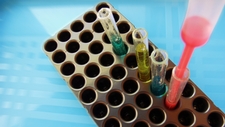Kinds of Evidence

TEKS Objective
Analyze and interpret information to construct reasonable explanations from direct observable and indirect inferred evidence.
Essential Understanding
The student uses scientific methods during laboratory and outdoor investigations.
Science Background
Data, Analysis and Interpretation: Visionlearning (website) - Detailed information on data collection, analysis, interpretation and dissemination, along with references for further reading and additional learning modules on graphing, statistics and data accuracy.
Signature Lesson
How Much Sugar is in Bubble Gum? TeachEngineering (website) - During this simple experiment—to determine whether sugarless gum loses as much mass after chewing as regular gum does—students learn the importance of experimental variables and controls; make observations; gather, analyze and interpret information, and design and conduct new experiments based on their own hypotheses. This lesson includes teacher background, assessments and extensions.
How Much Sugar is in Bubble Gum?
TeachEngineering, www.teachengineering.org
- Supporting Lessons
- Extensions
- Assessment Ideas
- Literature Connections
- Related
TEKS - Additional Resources
Supporting Lessons
Science Discrepant Events and Critical Thinking: Suite.io (website) - Discrepant events enable students to witness scientific occurrences that have unexpected outcomes and contradict their prior knowledge. This phenomenon forces students to use critical thinking skills as they try to explain what happened.
Science Discrepant Events and Critical Thinking
Suite, www.suite.io
Elaboration Lessons and Extensions
ZOOMsci: PBS Kids (website) - Choose from numerous featured investigations to engage your students in a wide range of science investigations requiring data interpretation and analysis, and the construction of explanations from observable and inferred evidence.
Assessment Ideas
As part of the Signature Lesson, How Much Sugar is in Bubble Gum, have students create posters that summarize their investigations and findings. Students should work in teams to create posters and present them to the class.
Rubrics for Assessment: University of Wisconsin, Stout (website) - Sample science rubrics for formative elementary assessments.
Rubrics for Assessment
University of Wisconsin, Stout, www.uwstout.edu
Literature Connections
What’s the Plan? Designing Your Experiment. Hyde, Natalie (ISBN-13: 978-0778751540)
Solving Science Questions: A Book About the Scientific Process. Chappell, Rachel M. (ISBN-13: 978-1600445422)
Additional Resources
Magic Mixture, Apple Dunk: National Geographic Kids (website) - Use the Apple Dunk investigation to observe, interpret, and explain why apple slices treated in different ways turn brown at different rates.
Magic Mixture, Apple Dunk
National Geographic Kids, kids.nationalgeographic.com
TEKS Navigation
Grade 5
Need Assistance?
If you need help or have a question please use the links below to help resolve your problem.

Comments